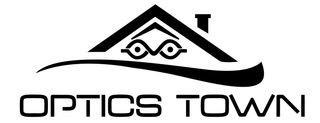Why Pilots Do Not Wear Polarized Sunglasses: Safety and Functionality Considerations
Sunglasses are a must-have for pilots. They help reduce glare, improve visibility, and protect eyes from harmful rays. Many imagine pilots wearing dark, stylish shades to look cool in the cockpit. But surprisingly, most pilots avoid polarized sunglasses. Why? It’s not just about style — it’s about safety, technology, and regulations. Let’s explore the real reasons behind this unusual practice.

Safety Risks of Polarized Sunglasses for Pilots
Understanding How Polarization Works
Polarized lenses block horizontal light waves bouncing off surfaces like water, snow, or roads. This reduces glare and makes things clearer in bright conditions. They work great for driving or fishing, helping eyes relax and see better. But this magic trick doesn’t always help in the sky.
Impact on Cockpit Instrument Readings
Most modern planes rely on digital screens and LCD displays to show vital information. Polarized lenses can interfere with these screens. They may darken or distort the display, making it hard to read altimeters, navigation maps, or engine monitors. For pilots, small errors can turn into big safety issues. Interference with cockpit electronics is a serious concern.
Risk of Missing Critical Visual Cues
Glare from runway lights or reflections on other aircraft might be harder to see through polarized lenses. Weather phenomena like fog or rain can also blend into the background. Some incidents have shown pilots missing important visual cues because polarized glasses made visibility worse at critical moments. This is why safety experts warn against using polarized sunglasses in flight.
Technological Compatibility and Instrument Visibility
Interaction with Modern Avionics
Most aircraft are equipped with LCD screens that are sensitive to polarization. These screens emit light that can be blocked or distorted by polarized sunglasses. Studies and manufacturer guidelines warn pilots about potential interference. Wearing polarized lenses might hide or mess with key readings, which can be dangerous when precision matters most.
Communication and Radar Systems
While polarization affects screens, it generally doesn’t impact radio signals or radar operation. Radio waves can pass through polarized lenses without issue. Still, the focus remains on visual clarity. If a pilot cannot see everything clearly, communication alone won’t fix the problem.
Industry Standards and Regulations
Aviation Authority Guidelines
Organizations like the FAA (Federal Aviation Administration) and EASA (European Aviation Safety Agency) emphasize safety first. They recommend pilots use non-polarized eyewear for flying. These rules exist to prevent any interference with electronic systems and ensure maximum visibility. Wearing the right glasses isn’t just a style choice — it’s a safety requirement.
Commercial vs. General Aviation Practices
Airline pilots often follow strict uniform standards, including specific eyewear rules. Private or recreational pilots might have more freedom, but the industry consensus favors non-polarized lenses for safety. Regardless of flying experience, safety always comes before fashion when it’s about eye protection.
Practical and Operational Considerations
Visual Clarity and Contrast
Non-polarized sunglasses often offer better contrast under different lighting conditions. They help pilots see better in bright sunlight without the risk of hiding important visual cues. Choosing the right lenses can make a big difference for visual performance and safety.
Pilot Preferences and Equipment Compatibility
Some pilots prefer specific brands that produce non-polarized sunglasses designed for aviation. They look for lenses that do not interfere with cockpit displays or other electronics. These specialized glasses help maintain a clear view without risking safety.
Conclusion
Most pilots avoid polarized sunglasses mainly because they can cause glare issues with cockpit screens, hinder visibility of runway lights, and sometimes interfere with instrument readings. Regulations from authorities like the FAA reinforce this safety guideline. When choosing sunglasses, pilots should focus on lenses that boost contrast and reduce glare without affecting electronic displays. Staying updated on safety standards and technology updates ensures eye protection remains a priority. Remember, flying safe means making smart choices about what you wear in the cockpit. Looking for oppotunity in wholesale sunglasses? Contact us now.

